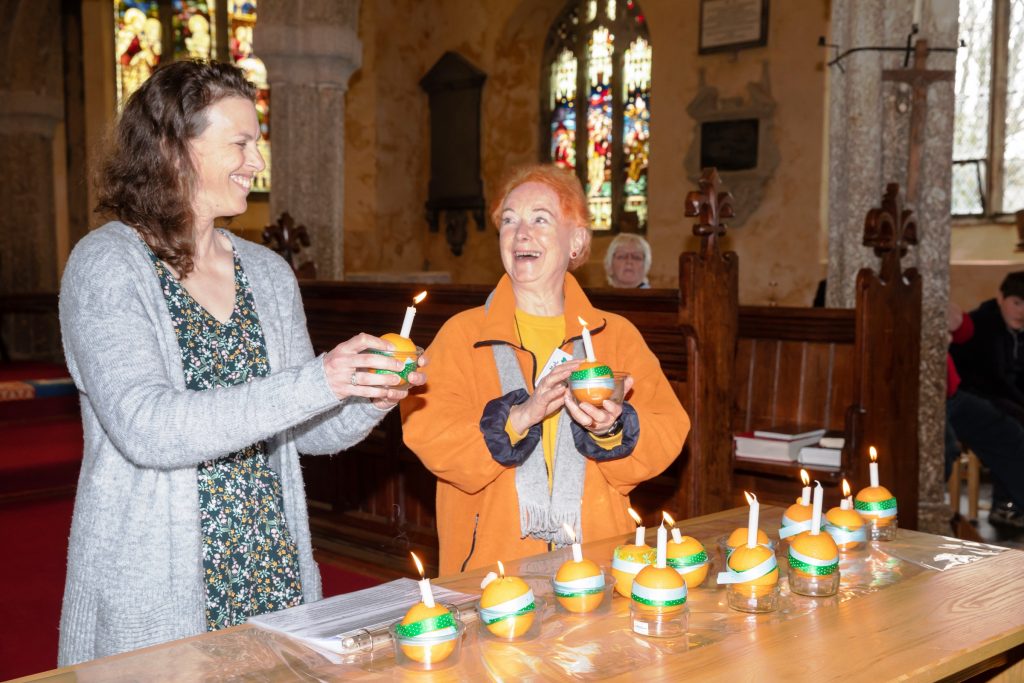14th April
March, wettest in decades; clear messages for STEM, multiple turbines + potential for Energy Local.



Rain, rain go away! March has broken historic records and April seems set to continue the soggy theme. But this is no surprise, after all it is simply reinforcing the matter of BALANCE.
If you were reading over Easter, I gave a good mention of balance in nature and in our lives. This tendency to see-saw from one extreme to another has certainly been borne out by the weather since Christmas. January and February were unusually dry and sunny, but I was just holding my breath for the change to arrive … and of course it did. Here are the stats:-
According to Met Office statistics, England, Wales and Northern Ireland have all had one of their ten wettest Marches on records which go back to 1836.
- England’s wettest March since 1981 and the third wettest on record.
- Wales’s March was its wettest since 1981 and fifth wettest on record.
- Northern Ireland had its third wettest March, though it didn’t eclipse its wettest March on record, set in 2019.
In a rain-soaked month, Wales had 206.5mm of rain, double its long-term average. For England, 119.2mm of rain fell, which is more than double its long-term average, with 104% more rainfall than average. Northern Ireland has seen 151.2mm of rain fall, which is 74% more than average.
Scotland, however, saw rainfall totals more in line with its average, with 130.1mm of rain being just 4% more than average.
Environment Agency Executive Director and National Drought Group chair John Leyland said: “Rainfall in March has helped water levels improve, but it follows on the heels of a very dry February so there is a need to remain vigilant – especially in areas that have not recovered from the drought last year.
“We cannot rely on the weather alone, which is why the Environment Agency, water companies and our partners are taking action to ensure water resources are in the best possible position both for the summer and for future droughts.
“As ever, it is important that we all continue to use water carefully to protect our precious rivers, lakes and groundwater, and the environment and wildlife that depend on it.”
South West Water has today issued a reminder that a hose-pipe ban remains in place here, with levels only at just above 60% of capacity in the main reservoir.
The Met spokesman, Dr Mark McCarthy, concluded: “March 2023 will be remembered for being a dull and wet month, especially for those in the south of the UK. While the rainfall has been notable in England and Wales, it hasn’t been enough to fully recover the deficit of rain over the last 12 months. People will also look back on the snow that arrived mainly for northern areas, but, while disruptive for some, this was a fairly typical snow event for the UK in March.”
Correspondence
I can almost predict, these days, which readers may use the Comments box. Lin is certainly one and her comments, both supportive and challenging, always add a new dimension. Last weekend she wrote about temperate rain forest:-
There are many small pockets of temperate rain forest in Cornwall. I attach a link to a site which contains a map of ones already located in the U.K. This has just been brought to completion through a crowdfunding project.

She followed this with an email – Just spotted some ancient rainforest relics today down near Penryn. All about us if you keep your eyes peeled. And this was followed by …

Sorry we didn’t get any photos, but do you know about the Chyan Centre not far away? It’s an alternative type of off-grid community and they run lots of interesting courses, including a BTEC in Organic Horticulture. We have just been to a Wellbeing Day, where we ate vegan cake and drank apple juice, sang and listened to flute. I danced and went on a guided foraging for edible plants. Saw some very swampy mossy areas which I think looked like they were Temperate Rain Forest remnants.
https://chyan.org/ Thanks again Lin, for this.
NEW SEASON

I am borrowing that well-worn phrase from sports fields, to describe the ground here at Meadow Barns. It is one of 2 reasons why the site is not open to the public, even though we are beyond Easter and could potentially be earning from visitors. Nobody would really enjoy an hour or 2 here, with such tremendous wind and rain lashing the hillside.
Failed Funding
The second reason for delay is that it took endless weeks to hear from Heritage Lottery, that we were not successful in a bid for £s to help pay for new outdoor displays and other improvements. The result, simply, is our usual method – revamp, re-use, tart up the old. Add a big dose of imagination and some well-chosen images and we will be ready to go for beginning of May.
New branding
As Climate Hope seems to be over-taking the history stories, it looks like time for a re-branding (yawn!). With minimal budget now, this is my own mock-up of something with a more modern feel, sent to our artist, Louise. Can’t wait to see what she ends up with. But in the meantime feel free to give feedback or any alternative sketches! PS How many rebranding exercises can you think of that were worth the money? Great Western Railway? We still see the old pink and blue carriages around here. Should never have replaced the original colours in the first place! Cornwall Solar becoming ‘Naked Solar?!’ A much less sensible name and messy branding too.


Simpler, easier routes to STEM
The greatest problem with this blog and our next batch of displays is the technical nature of green energy systems. Sometimes the concepts baffle me, but still I must research and find ways to interpret in a few lines, with images to assist.
It would be helpful to know, from the following especially tricky topics, are we on the right lines? Can you suggest improvements?
a) Ground Source 4 Heat
For this there will be a big outdoor board, alongside the old freezer! There is more tidying up to do, and I am working on a new set of props to hide inside the freezer and help with the learning.
A heat exchange happens, when a tube of warm liquid or hot air goes into a colder tank or container of ‘Refrigerant’. The hot is transferred into the cold and that is the Xchange. In a fridge, the hot air is eventually released into the kitchen.
For ground source or water source heat systems things go the other way round:- tubes of cold enter the lower levels of earth or lakes or rivers (Water Source), picking up the heat and coming up warmer.
First prop in the freezer = A clear sack with impression of cold blue water in it. Push in a red pipe, to the base and show heat going into the cold and at the bottom, the start of a warming heat Xchange. Do you understand this?
The result of one heat exchange from the ground, is not enough heat for a home, you need to give it another Xchange boost, This, and the pumping of the system, requires some input of electricity.
Confused? Your questions/comments could help us improve this, but please bear in mind it needs to be only a few lines long and using very limited technical jargon. And please send without delay.


b) Ground Source Power
Immediately next to this board comes the long solar PV display, with piles of rocks and mining waste below. We are planning 3 long banners to be strung across here, in the space beneath the panels and have designed 2 of these so far. What about the 3rd. Any suggestions?

c) Power of sun and PV – sorry you will need to enlarge this one, for the panel requirements.

These are just the start. 5 more to do at least, so a lot more homework for me!
Let me reflect a moment, here. The requirement to write like this every week can feel very onerous sometimes. But the minute I begin to talk to people on a topic (such as the refrigerant one above) many other new elements can come up. It is a great and regular learning curve of my own and one I must continue, even if I cease writing a blog eventually.
Another conversation today was with a nearby farmer, who has permission to build a new bungalow on his ground on top of a hill. I wanted to explore some options with him and possibly alert him to a few he might not know about. It was agreed he needs to decide between an air source or a ground source heat system. With the deep borehole version, the ground source is much more efficient but also more expensive. I then progressed to saying, this hilltop could be a perfect location for a domestic small wind turbine. I described the AirForce1 turbines, that could be installed using nothing more complex than a stand-alone tower made of scaffold poles. The team at FuturEnergy.com have all the experience he would need, for supplying, setting up with battery storage and support towers. One turbine is very affordable and would not even need planning permission, but there is a down-side – it doesn’t generate much at all. Just 1KW.
Connecting Multiple Turbines
At this point I began to ponder connecting multiple turbines – a line of supporting scaffold poles, along the side of the hedge. If technically feasible to do so, then I knew smaller scaffold poles could be used, as a means to connect cable in a kind of handrail, which would need to end with a shed for controls and battery storage. I got this idea on an evening walk through Fowey, where the hand rail leads up to a lovely old street lamp (see below). This even made me think such a connection could be permitted for connecting multiple run-of-river hydro turbines in the World Heritage Site. Wow, there’s a thought!


Perhaps this is fanciful nonsense. Certainly many questions remain. How many could we fit along the hedge? 4 perhaps. Up to 8 or 10 if more fields were to be involved. Could they be sufficiently well protected from grazing animals? If operating together, would one turbine cause interference with another? Should they be at different heights? This model has a max height of 8m. What is the data about this type of turbine causing damage to wildlife? Bats, birds etc?
There would also be a need for noise assessment, and consideration of the possible turbulence around a large agricultural building not far away. I remembered reading about this in a FuturEnergy PDF from their website, in the past, and wonder if I can persuade anyone with a bit of experience flying kites, to come and help us run a test!
A tree line of 30m trees disturbs the air up to 60m high, the effects of which are felt up to 600m away!
The figure below illustrates the potential effects. Locate your wind turbine either upwind of the obstructions, or far enough downwind so that the effect has decayed.

SIMPLE TEST
An inexpensive and visually productive way to find out at what height turbulent air ends, and smooth, laminar airflow begins, is to fly a kite at the proposed wind turbine location on a windy day, preferably when the wind is coming from the prevailing direction. To visualise airflow, use tape-streamers tied to the kite’s string every 5m or so, (DIY stores sell plastic marking tape in fluorescent colours). Wildly fluttering tape indicates turbulence, smoothly extended tape means smooth air. Be sure to take the angle of the kite’s string into account when calculating height.
MORE ADVANCED TEST
An hour or so playing with a kite is one thing, but moving to a more serious level of proposal for multiple turbines (wind or hydro) would also raise questions with regard to connecting in series or in parallel (serious STEM involved!) also asking whether one would sell or share the power generated, across a surrounding geographic area. Selling to the National Grid is not an option, in most cases, since the grid was never designed to receive, only to send out power. Today it is overwhelmed by demand from new solar and wind installations but cannot accommodate. The result is, these days most small schemes are set up to share power locally, via ‘private wires’.
To take this forward I have followed the suggestion of Richard Cochrane, professor of Sustainable Energy at Exeter University, Penryn Campus and registered to join ‘Energy Local’. Based on their website Welcome to Energy Local | Energy Local I anticipate learning lots from them, which may (with a lot of luck and hard work) turn into a new Energy Local Club in Cornwall.
Last but not least – new films are up. One will make you smile (Bishop doing a jig to the piper). Another is so hilarious, you will cry with laughter (Procession and Rain Dance of African Animals). Hope you enjoy and do please Subscribe to the channel and Share #Ceremony4ClimateHope.




